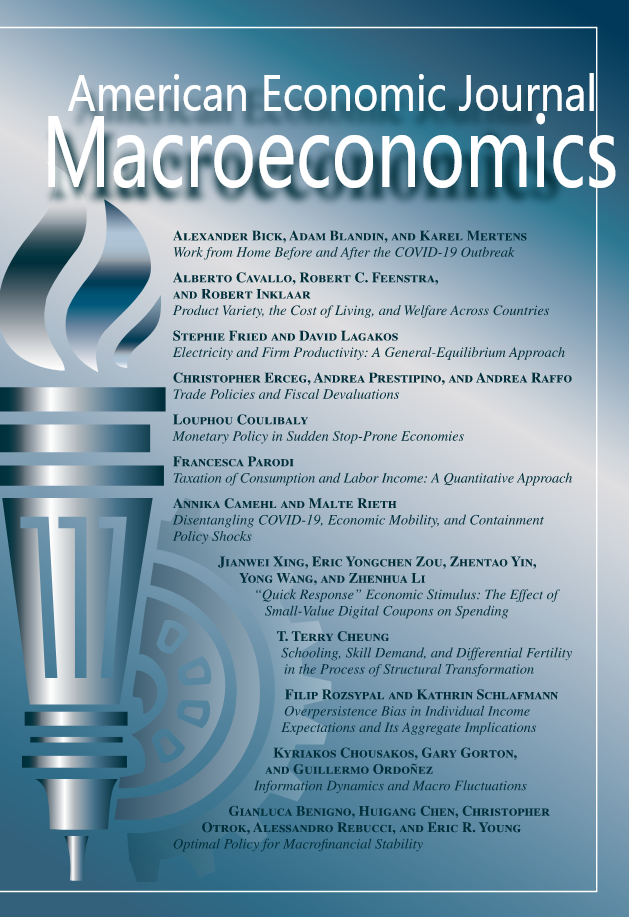人口老龄化对经济增长、劳动力和生产率的影响
IF 5.7
1区 经济学
Q1 ECONOMICS
引用次数: 5
摘要
预计人口老龄化将减缓美国的经济增长。我们使用各州人口老龄化的预定组成部分的变化来估计老龄化对1980-2010年人均GDP增长的影响。我们发现,60岁以上人口比例每增加10%,人均GDP就会下降5.5%。三分之一的减少是由于就业增长放缓;三分之二是由于劳动生产率增长放缓。劳动报酬和工资也随之下降。我们的估计表明,1980-2010年期间,人口老龄化使人均GDP增长率每年下降0.3个百分点。(jel e23, e24, j11, j14, j31, o47)本文章由计算机程序翻译,如有差异,请以英文原文为准。
The Effect of Population Aging on Economic Growth, the Labor Force, and Productivity
Population aging is expected to slow US economic growth. We use variation in the predetermined component of population aging across states to estimate the impact of aging on growth in GDP per capita for 1980–2010. We find that each 10 percent increase in the fraction of the population age 60+ decreased per capita GDP by 5.5 percent. One-third of the reduction arose from slower employment growth; two-thirds due to slower labor productivity growth. Labor compensation and wages also declined in response. Our estimate implies population aging reduced the growth rate in GDP per capita by 0.3 percentage points per year during 1980–2010. (JEL E23, E24, J11, J14, J31, O47)
求助全文
通过发布文献求助,成功后即可免费获取论文全文。
去求助
来源期刊

American Economic Journal-Macroeconomics
ECONOMICS-
CiteScore
8.20
自引率
1.70%
发文量
58
期刊介绍:
American Economic Journal: Macroeconomics focuses on studies of aggregate fluctuations and growth, and the role of policy in that context. Such studies often borrow from and interact with research in other fields, such as monetary theory, industrial organization, finance, labor economics, political economy, public finance, international economics, and development economics. To the extent that they make a contribution to macroeconomics, papers in these fields are also welcome.
 求助内容:
求助内容: 应助结果提醒方式:
应助结果提醒方式:


